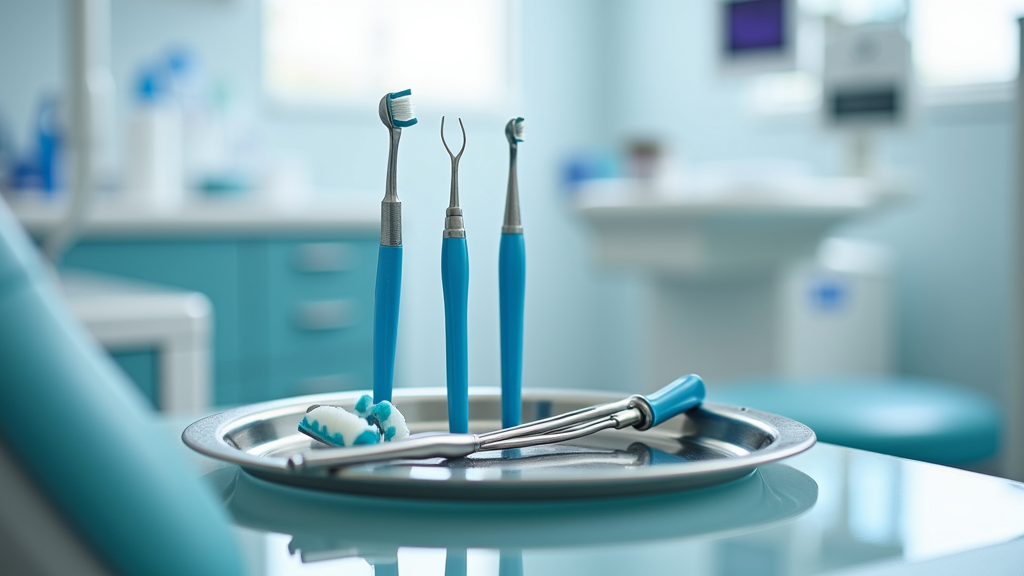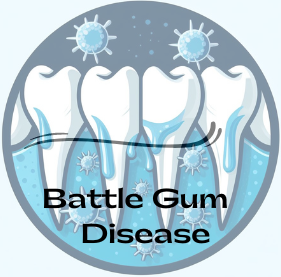Heading in for a dental cleaning often triggers questions and a bit of worry, especially if you haven’t gone in a while. I know plenty of people who feel uncertain about what actually happens during a cleaning or wonder if it’s going to hurt. The truth is, professional teeth cleanings help keep your mouth healthy and can even catch bigger issues before they become a hassle. Here’s a clear walkthrough of what you can expect, why it matters, and what you might feel along the way.

Why Dental Cleanings Are Really Important
Teeth cleanings aren’t just about checking off something on your to-do list. When you get regular professional cleanings, you’re lowering your risk for gum disease, tooth decay, and even problems like bad breath. Even if you brush and floss daily, some plaque and tartar can build up in places your toothbrush simply can’t reach.
The American Dental Association recommends a cleaning every six months for most people. In my experience, people who stick to that routine end up having fewer issues in the long run. Plus, a cleaning offers a great chance for your dentist or hygienist to spot early signs of anything off, such as cavities or gum trouble, way before you notice on your own.
The Step by Step Dental Cleaning Process
Knowing exactly what happens at the dentist’s office helps take away some of the stress or mystery. Here’s how a standard dental cleaning usually goes:
- Initial exam: First, the dental hygienist usually takes a quick look inside your mouth to check for any obvious problems like inflamed gums, loose teeth, or odd spots. If something needs special attention, the dentist might step in for a closer look.
- Scaling: This step involves removing built-up plaque and tartar from your teeth and just below the gum line using special metal tools or a high-powered electric scaler. It can make some scraping sounds, but it shouldn’t be too uncomfortable.
- Polishing: After scaling, your hygienist polishes your teeth using a gritty toothpaste and a motorized brush. This smooths the surface of your teeth and gets rid of stubborn stains, leaving your smile brighter.
- Flossing: Even if you floss daily, the dental pro goes between all your teeth to clear out any debris or polish that might’ve gotten wedged in during cleaning.
- Rinse and fluoride: Finally, you’ll rinse, and sometimes fluoride treatment is applied. This strengthens your tooth enamel and can reduce cavity risk.
- Dental exam and x-rays (sometimes): If it’s your first visit or if it’s been a while, you might also get x-rays. Then the dentist takes a look, gives feedback, and answers your questions.
The whole process usually takes 30 to 60 minutes, depending on how much work needs to be done. From my personal experience, having a deep cleaning from a professional feels way more manageable when you know each step in advance. For children and teenagers, a dental cleaning usually takes less time, but it is just as crucial. If you have braces or dental appliances, your dentist may use different tools, and the process could involve a few extra steps to make sure every area is clean.
How Painful Is Dental Cleaning? What Are the Most Painful Dental Procedures?
One of the things people ask me all the time is if dental cleanings are painful. Usually, a routine cleaning causes little to no pain. You might feel some sensitive spots or a bit of pressure, especially if you have more tartar or haven’t had a cleaning in a while. Some folks experience mild soreness or bleeding if their gums are already inflamed. That’s pretty typical for people with early gum disease.
If you know you have sensitive teeth, it’s smart to mention this at the beginning. The hygienist can adjust how they work and even use a numbing gel in really sensitive areas. On the pain scale, cleanings rarely go above mild discomfort. But if you put off regular visits, it can get rougher, since more plaque and tartar needs to be removed.
When it comes to more intense dental pain, cleanings don’t compare to things like tooth extractions, root canals, or getting wisdom teeth removed. Those procedures are more invasive and can involve plenty of pressure or pain. Numbing shots help a lot here. If you’re curious, most people agree that without anesthesia, tooth extraction or root canal therapy is among the more painful dental treatments. If dental anxiety is an issue, share your concerns up front so your care team can walk you through what to expect each step of the way. Going to a dental office with a caring team and comfortable environment makes a big difference. There are also options like sedation dentistry for those who experience a lot of dental anxiety.
Common Concerns and Myths About Dental Cleanings
Dental cleanings get a bad rap sometimes, but I believe a lot of the fear comes from myths or old stories. There’s a common misconception that scraping will damage your enamel. It won’t if it’s done by a professional. The tools are designed to remove deposits without harming your teeth.
People also worry that fluoride is dangerous, but when it’s used as prescribed during a cleaning or in toothpaste, it’s safe and actually protects your teeth. If you have questions about anything used during your cleaning, just ask. Most dental teams are happy to make sure you’re comfortable and informed.
Below are the 3 common myths about dental cleaning:
- Cleanings make your teeth sensitive. Fact: Any mild sensitivity is usually temporary and goes away within a day or two.
- Bleeding gums mean the hygienist is being rough. Fact: Bleeding usually points to inflammation or gum disease.
- Baby teeth don’t need cleaning. Fact: Kids benefit just as much as adults from regular dental cleanings.
Another concern is the cost of dental cleanings. Many dental insurance plans cover two cleanings each year, at little or no cost to you. If you do not have dental insurance, talk with your dental office. Many provide affordable payment plans or discounts for routine cleanings. Early prevention always ends up being less expensive—and less stressful—than waiting until you need more involved procedures.
Preparing for Your Dental Cleaning Visit
The best way to have a smooth dental cleaning starts even before you get to the dentist’s office. Good oral hygiene—brushing twice a day and flossing regularly—makes cleanings easier and faster. On the day of your appointment, brush your teeth like usual, but skip whitening products or at-home bleaching strips right before your visit.
If you’re nervous or know you have sensitivity, let the office staff know ahead of time. You can bring along headphones and listen to a playlist or calming podcast during the cleaning. I also suggest jotting down any questions or issues so you remember to ask while you’re there.
If you have a medical condition that affects bleeding or you take blood thinners, make sure to let your dental team know. For those with anxiety, consider relaxing techniques like deep breathing or visualization before your appointment. Sometimes, your dentist can prescribe a comforting rinse to use just before your visit to tone down gum sensitivity. If you’re bringing in a child for their first cleaning, it helps to talk about the experience positively; maybe read a book or watch a fun video about dentist visits to ease their mind.
What Happens After Your Cleaning?
Once your teeth are polished and sparkling, you might notice they feel smoother and look a bit whiter. If your gums were irritated during cleaning, there could be some mild soreness for a day, but it usually goes away quickly. Drinking lots of water, avoiding hard or crunchy foods for a couple of hours, and sticking with your dental hygiene routine help your mouth recover fast.
If your dentist notices any problem areas, such as early cavities or signs of gum disease, they’ll offer advice about treatment or at-home care. Following up as recommended helps spot issues before they turn into bigger problems. Your dentist might give you extra cleaning tips, suggest a new type of toothbrush, or recommend rinses that help with sensitivity. Healthy eating habits, combined with regular cleanings, lead to stronger teeth and better breath. Don’t forget to schedule your next cleaning before you leave the office so it doesn’t slip your mind! Prevention is always easier than treatment down the road.
Frequently Asked Questions About Dental Cleanings
How often should I get a dental cleaning?
For most people, every six months works best. If you have gum disease or other dental issues, your dentist might suggest more frequent visits, like every 3 or 4 months.
Can I eat right after a dental cleaning?
Yes! If you had a fluoride treatment, waiting about 30 minutes before eating or drinking lets the fluoride work better. Otherwise, you’re good to eat after your appointment.
What should I do if my gums bleed when I brush after a cleaning?
Some bleeding is common if your gums are inflamed. Keep up with gentle brushing and flossing; bleeding usually improves as your gums get healthier.
Are dental x-rays always required?
Not always. Most dentists recommend x-rays once a year or so, or if there’s a specific concern. They help spot hidden issues but aren’t part of every appointment.
What should I tell my dentist before my cleaning?
If you’ve had any health changes, new medications, allergies, or recent dental pain, be sure to let your dental team know at the start of your visit. This helps them provide the safest and most personal care possible.
What about those at-home teeth cleaning kits?
While some products help keep your mouth feeling fresh, at-home kits can’t replace professional cleanings. Dental pros are trained to remove tartar safely and check for issues you can’t spot on your own.
Conclusion
To briefly wrap up, regular dental cleanings are a simple, key part of keeping your mouth healthy and your smile bright. They can prevent bigger problems, ease your worries, and leave you feeling confident about your oral health. If you’ve been putting off your cleaning, now’s a great time to schedule and take the first step toward a happier, healthier smile.
